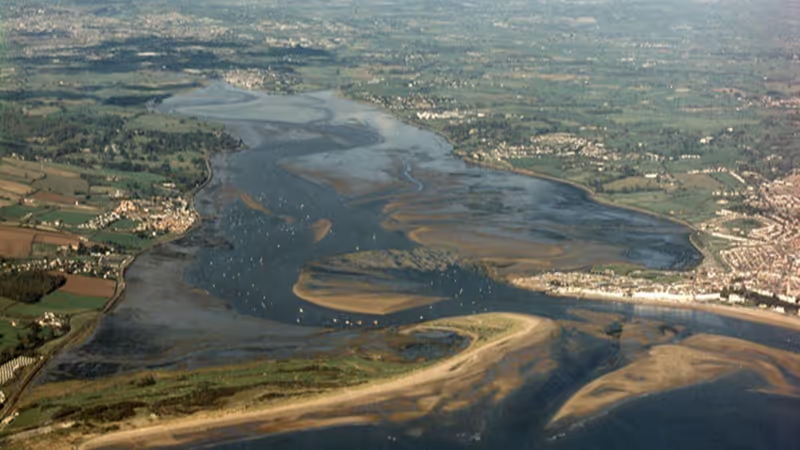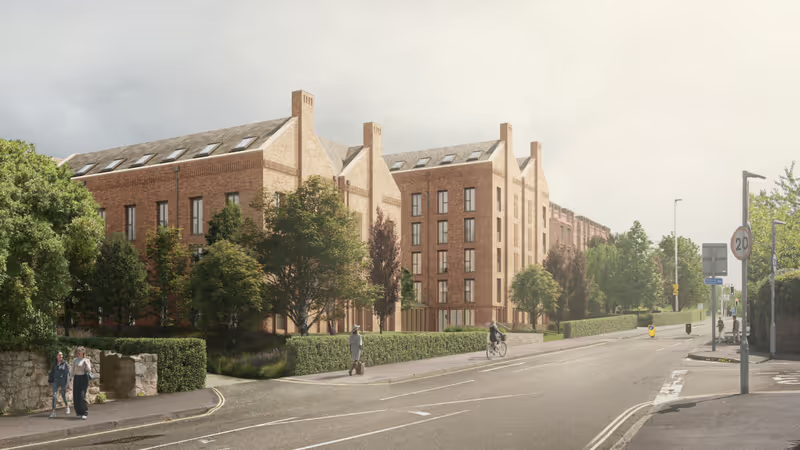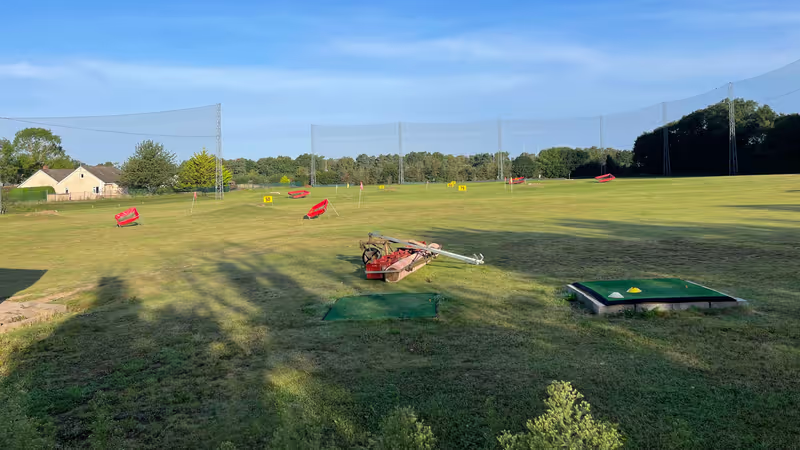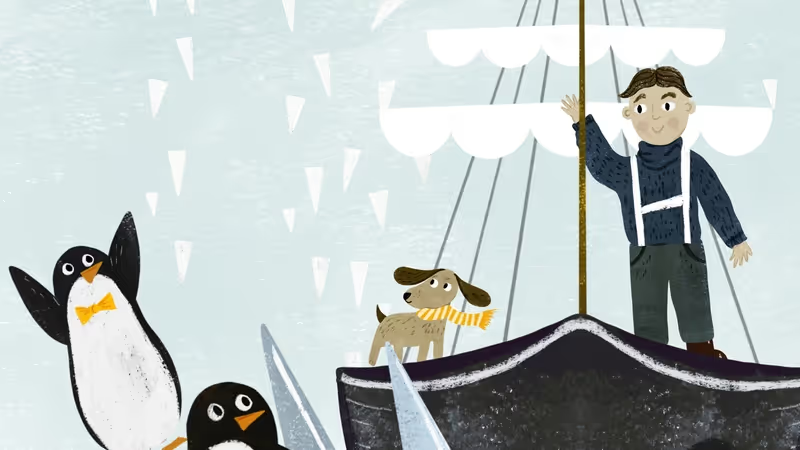Eutopia Homes says it “prides itself on providing unique homes” but apparently doesn’t feel the same way about consulting the public on its plans to build them.
In early May it began a pre-application consultation on its proposals to replace Mary Arches car parks with a pair of linked six-storey blocks containing 309 “co-living” units with so little fanfare that only ten residents attended the online presentation it seemed to think sufficient for the purpose.
The day after the presentation, nearly two weeks after the consultation started, it finally published details of its site redevelopment proposals on a temporary website.
The temporary website also says the company, headquartered in Tunbridge Wells and in the control of Scott Hammond, who has 44 appointments listed against his name at Companies House, has “a particular strength in bringing forward high quality brownfield regeneration and has done so in diverse towns and cities throughout the country”.
It lists Gloucester, Salford, Birmingham, Sittingbourne and Chatham among them but, according to the parent company’s website, has only actually completed a single block so far, at Exmouth Junction.
This block recently became the subject of an Exeter Observer story after the flats it contains were marketed at £1,375-£2,350 per month with “affordable” units costing £1,080-£1,800 plus bills.
 Proposed Mary Arches co-living studio illustrative layout plan. Source: Eutopia Homes.
Proposed Mary Arches co-living studio illustrative layout plan. Source: Eutopia Homes.
Unlike at Exmouth Junction, where the flats all meet national space standards, the firm’s proposals at Mary Arches include squeezing in 280 “units of accommodation” that include a bathroom, toilet, kitchen, living area and bedspace in a rectangle as small as 18 square metres.
To these it would add 29 further “large units” with footprints from 29 square metres. These are intended to be accessible to people with disabilities but also do not meet national space standards.
It says all these units would give occupants “their own space to relax, sleep and store their belongings”, adding that all “should be well-ventilated and provide as much daylight as possible”.
The resulting density on the 1.2 acre Mary Arches site would be 257.5 units/acre. As there appears to be no restriction on couples sharing, it is possible that as many as 600 people could end up trying to live cheek by jowl in the two blocks. That’s more than the 481 car parking spaces the site currently provides.
As Eutopia Homes also says that rental contracts would be “more flexible than in the traditional private rented sector”, suggesting that licenses to occupy will be used instead of assured shorthold tenancy agreements, the development’s occupants might all lack privacy and possession rights too.
Welcome to “homes for the people of Exeter”, as city council leader Phil Bialyk has repeatedly described the outcome of development promoted by the council on the site.
 Mary Arches car parks redevelopment proposals presentation. Source: Eutopia Homes.
Mary Arches car parks redevelopment proposals presentation. Source: Eutopia Homes.
During last month’s online presentation of its proposals, Eutopia Homes project manager Lorna Henderson confirmed that the council had insisted on a “co-living” build-to-rent development on the Mary Arches site.
She added that this use, which she said is “seen as meeting a need”, has the added advantage of political support.
Barry Cansfield, the project’s planning consultant, also claimed that the new Exeter Local Plan supports this use of the site, although the publication draft of the plan, the version that is being submitted to the Planning Inspectorate for examination, actually describes it as intended for 154 units of “predominantly residential” housing.
The “Liveable Exeter” prospectus which accompanies the new local plan as part of its evidence base adds that the North Gate development site, of which the Mary Arches car parks are part, is intended to provide a total of 308 new homes as well as “a new approach to the city from St David’s”.
As the council has already granted planning consent to replace Harlequins shopping centre with 383 “co-living” units, and is expected to announce plans to redevelop the upper floors of the Guildhall shopping centre, North Gate appears to be well on its way to packing in three times the number of new dwellings that are proposed in the plan.
Certainly no-one could say that Exeter City Council ever lets its responsibilities as local planning authority get in the way of enabling developers to use scarce city centre development land to indulge in large-scale rent-seeking.
 Proposed Mary Arches co-living block illustrative view. Source: Eutopia Homes.
Proposed Mary Arches co-living block illustrative view. Source: Eutopia Homes.
Eutopia’s redevelopment proposals include a section entitled “Co-living Market Analysis” which unsurprisingly provides no evidence at all of demand for co-living in Exeter.
Instead, it dismisses critics of high rents for tiny co-living units by saying they are “often mistakenly thought to be at a premium to the wider residential market” and claims that “high-quality amenities” included in “one simple monthly rental payment” is what “more than compensates for the smaller bedroom space”.
Without a trace of irony, following its decision to set rents at Exmouth Junction that are 52-70% above Exeter private sector averages, it says the reason people are “choosing co-living” is “high rents in build-to-rent developments”.
It adds that “rising costs within the private rental market” are causing renters to look for what it calls “alternative housing options” – an apparent euphemism for paying higher rents for smaller spaces.
Curiously, its “analysis” doesn’t mention the prospect of student occupation despite “co-living” in Exeter being widely-understood as student accommodation in all but name.
Perhaps it cannot be blamed for thinking this way. A council planning officer’s report on an application to build a high-density “co-living” block in St James admitted that Exeter’s September 2022 Local Housing Needs Assessment found that “it is difficult to project a need for studio apartments or co-living schemes” in the city.
It added that the council’s “policy-led” approach risks “an over-supply of small dwellings which would exclude the ability of families to form in the area”.
However, instead of acknowledging that using council planning powers to artificially stimulate the supply of co-living does not demonstrate demand for its provision, the report goes on to say that the lack of demand actually means that there is “no evidence to demonstrate that it is not a suitable model” for the city.
A fine example of what has been known as the “argument from ignorance” by philosophers since the late seventeenth century.
Lorna Henderson nevertheless said, during last month’s online presentation, that Eutopia would provide a “clear explanation, data, research-based evidence for the need for co-living on this site” when it submits its Mary Arches planning application to the council.
When Exeter Civic Society chair Keith Lewis pointed out that Exeter is on course to rely on co-living for nearly 10% of its housing needs over the next fifteen years – referring to the 900 such consented units to which the Mary Arches plans would add another 300 – Tomas Pierce from Darling Associates, the firm responsible for the scheme’s design, said he thought this sounded “about right”.
 Proposed Mary Arches co-living blocks illustrative layout plan. Source: Eutopia Homes.
Proposed Mary Arches co-living blocks illustrative layout plan. Source: Eutopia Homes.
It wasn’t supposed to be this way. In late 2022 when the city council agreed to sell Mary Arches car parks to Exeter City Living for redevelopment, it said the company would build affordable social housing on the site, helped by a £1.31 million enabling grant from the government.
However things changed after Exeter City Living was subsequently all-but wound up with £4.5 million losses and owing £10 million to the council.
By the end of 2023 the council had decided to sell both Mary Arches car parks and the Clifton Hill sports centre site to help cover the company’s debts.
In the event their valuations remained under wraps, although then-backbench councillor Matt Vizard did admit that the council would be “turning down millions in potential receipts” by ruling out student accommodation use on either.
Even then, the Mary Arches decision was to sell “the multi-storey car park site for co-living use, and the surface car park for residential use”, drawing a clear distinction between the two.
At the end of last year Phil Bialyk subsequently announced that an agreement had been reached for what he twice called “residential housing” on the site.
He didn’t explain that it still came with the £1.31 million government grant whether redevelopment would actually deliver residential housing or “units of accommodation” with no tenancy rights.
 Excavations in the historic core of Exeter from Roman and Medieval Exeter and their Hinterlands (2021). Reproduced under Creative Commons license.
Excavations in the historic core of Exeter from Roman and Medieval Exeter and their Hinterlands (2021). Reproduced under Creative Commons license.
Nor did he appear concerned about the potential significance of archaeological remains on the site. The council’s own site plan designates the Mary Arches surface car park as “Isca Roman town” – although it appears never to have been excavated.
Eutopia Homes seems equally disinterested. The “Site History & Evolution” section of its proposals presentation opens with: “The site has been located in a built up urban environment for a long time, as shown in the map from 1810”.
Others see the situation differently, both at Mary Arches and in the wider context of policies proposed in the publication draft of the new Exeter Local Plan.
Emphasising the importance of the Mary Arches and North Gate areas in the context of the city’s ancient walls, a scheduled ancient monument of national importance, Devon Archaeological Society responded to these policies in no uncertain terms.
It said: “We must stress that the emphasis on the allocation of brownfield sites for housing within and in the immediate vicinity of the walled circuit has major implications for the buried archaeological deposits and wider historic environment of the city.
“We believe that there is a serious conflict between these policies and the statements now made regarding the value of the archaeological resource.
“In particular, the professed intention to promote the development of brownfield sites in and near the city’s historic centre to a greater than usual density of dwellings is irresolvably at odds with the protection and preservation of the city’s archaeological resource.”
Last March, the Secretary of State overturned a council decision to waive an Environmental Impact Assessment of its own proposals to develop the Liveable Exeter South Gate site following an intervention by the society.
It remains to be seen whether Devon Archaeological Society’s objections to the new Exeter Local Plan will be sufficient to convince the Planning Inspectorate that the plan’s many failings in this context should also be properly addressed.
 Mary Arches car parks redevelopment site aerial view. Source: Avison Young site sale brochure.
Mary Arches car parks redevelopment site aerial view. Source: Avison Young site sale brochure.
Eutopia Homes did eventually hold a public exhibition of its plans, a few days before the consultation closed this week, at Exeter Community Centre, after delivering invitations to nearby dwellings last Saturday.
It did so only with apparent reluctance, after Exeter Civic Society pointed out that large schemes such as this are usually expected to organise well-publicised events at which details of the scheme are displayed and resident input actively sought.
The civic society added that the only similar scheme which had not done so, at Heavitree Road police station and magistrates court, had been refused by the council and dismissed at appeal.
Unsurprisingly, the exhibition appears to have been as low-key as the online presentation. Only two people were present when an Exeter Observer reporter dropped in to take a look.
While Eutopia Homes does not have to take responses to its private pre-application consultation into account, and nothing prevents it making entirely selective claims about their content, the public consultation that the council must hold after Eutopia submits its planning application is different.
The council is required to properly consider all such consultation responses before it makes a decision about Eutopia’s plans, although some may anticipate a merely performative process.
Certainly Eutopia Homes appears in no doubt that its plans for Mary Arches car parks will be approved, even promoted, by the city council.
Lorna Henderson said the company is “keen to see this get through planning the by end of year” and expects to start on site by the end of 2026 with a two-year build to follow.
Perhaps, in keeping so quiet about its plans, Eutopia Homes is simply assuming that they will not need public support when the council has already effectively approved them.










